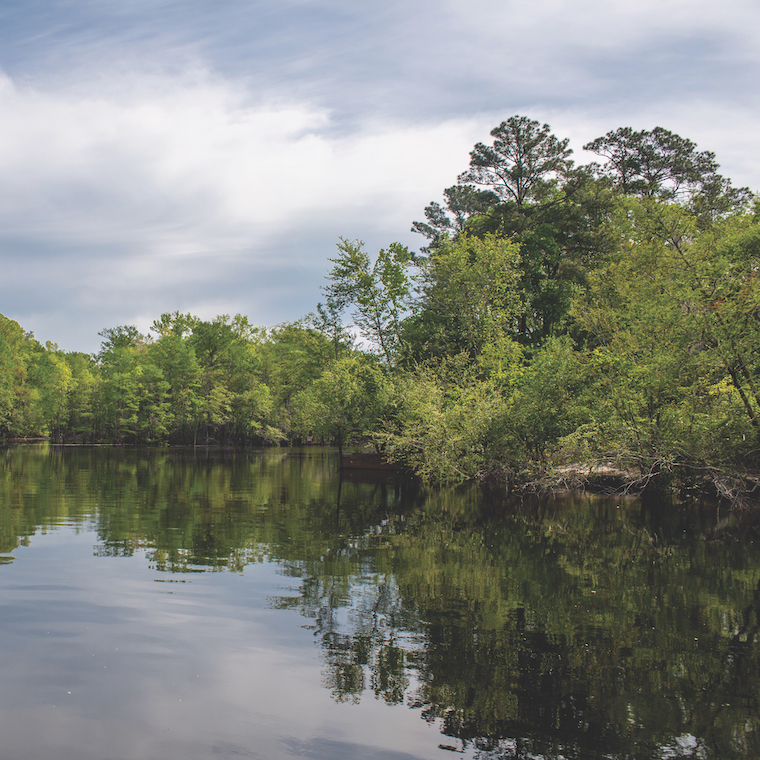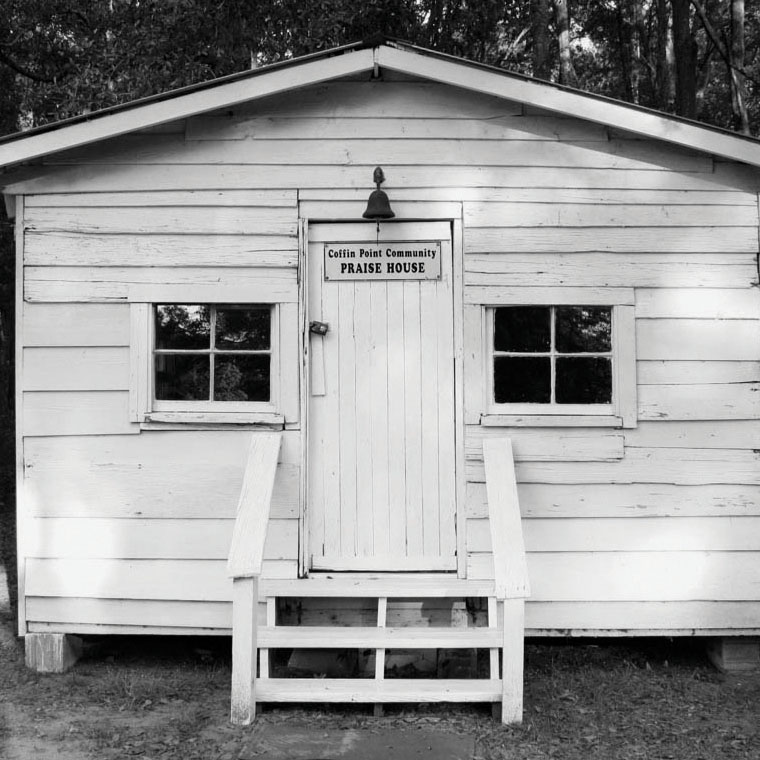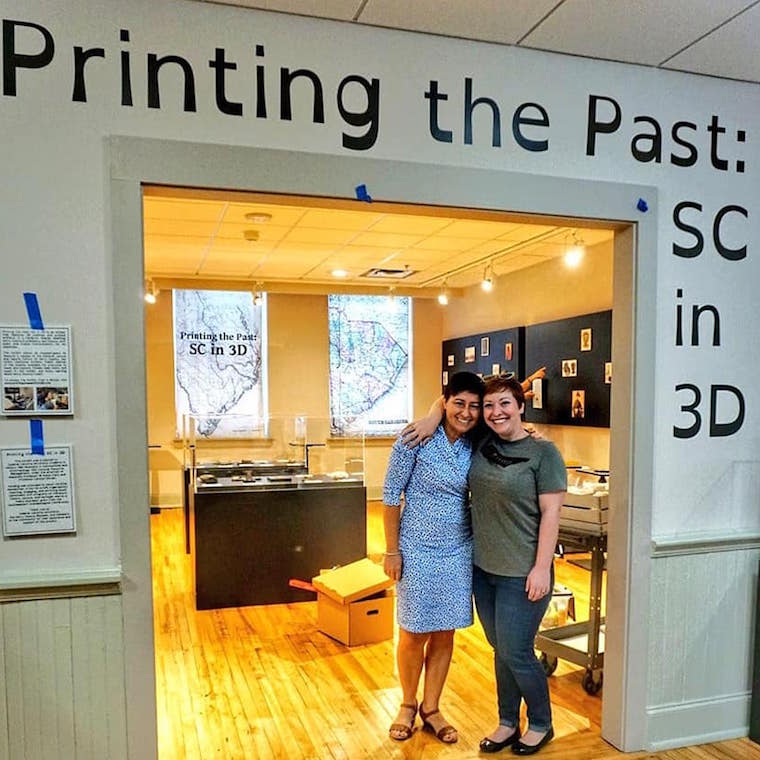Making Clones of Bones
CCU students collaborate with area museum to create renewable, accessible exhibit.
There’s a beaver skull in the Horry County Museum. The skull itself may be of mild interest to visitors, but the real story lies in how that skull got there and the nature of the display, which represent both a collaboration with Coastal Carolina University and a peek at how technology has the potential to transform museum operation. 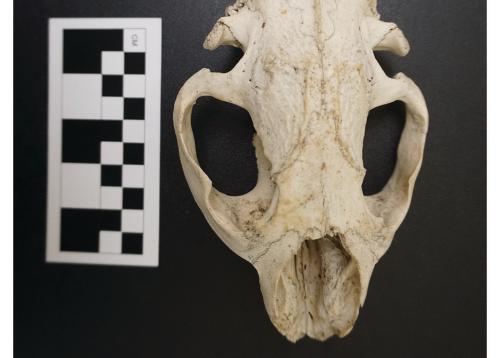
The skull is one piece of an exhibit titled “Printing the Past: S.C. in 3D,” which opened in April 2019 and is a partnership among two Coastal Carolina University experiential learning classes and the museum. History 392: Museums & Communities, and Anthropology 432: Cultural Resource Management, came together under the direction of M. Katie Clary, assistant professor in the Department of History, and Carolyn Dillian, chair and professor in the Department of Anthropology and Geography, respectively, to create a museum exhibit accessible to individuals with sensory differences. All original pieces were recreated through a 3D printing process, making them available for handling, and information is displayed through Braille and an audio recording in addition to the written word.
The result is an 18-piece exhibit that displays Horry County artifacts dating from 1.8 million years ago and invites visitors to see, hear and feel its content. Ranging from Civil War-era artifacts such as a hearing aid and a military medal, to prehistoric fossils such as a baby mammoth tooth and a horse foot, to Native American artifacts such as a pipe and a piece of game equipment, all the items reflect a central connection to Horry County and allow the visitor to understand the individual piece as part of a broader historical narrative.
“Museums have a responsibility to take care of the artifacts that are under our stewardship, but also an ethical responsibility to have accessibility, to make sure people — all people — get to enjoy that stuff, to see it and really experience it and learn from it,” said Walter Hill, director of the Horry County Museum.
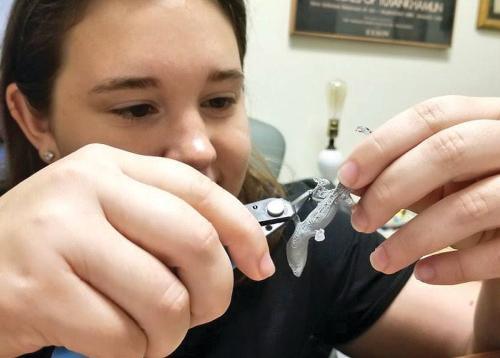 Students were intimately involved in every stage of the process, from selecting the pieces for display, to researching the items, to scanning the pieces, to determining the most effective positioning for printing, to conducting the 3D printing, to writing interpretive texts. They were even involved in constructing the stands and designing the display at the museum.
Students were intimately involved in every stage of the process, from selecting the pieces for display, to researching the items, to scanning the pieces, to determining the most effective positioning for printing, to conducting the 3D printing, to writing interpretive texts. They were even involved in constructing the stands and designing the display at the museum.
“My students were very excited to have that hands-on factor,” said Dillian. “Experiential learning is very important, and this was entirely new for them.”
Victoria Peck, a student in History 392, emphasized the fact that some individuals feel excluded from museum content because of a sensory difference.
“The idea that we were going to create an exhibit that accounts for the needs of so many different groups of people with different disabilities to make them feel more welcome in a museum setting was really exciting to me,” said Peck.
Dillian, Clary and students consulted with S.O.S. Healthcare, which works with children and adults with autism, and the South Carolina Commission for the Blind in developing the exhibit. They also invited Harold Hatcher, chief of the Waccamaw Indian People, to speak to the classes about the best strategies for interpreting and displaying artifacts from Native American culture. 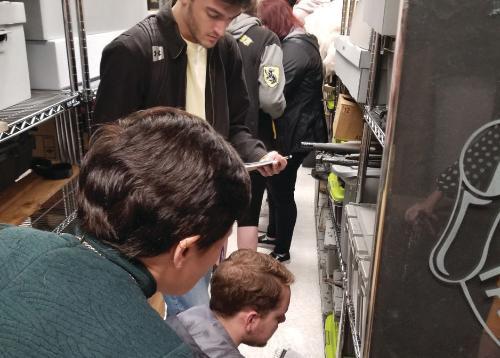
The items in the exhibit were all part of the museum’s collection, but they’d had varying degrees of exposure, as some were in research collections, some in rotating exhibits, and some on permanent display. The students’ process of selecting which items to highlight was also a benefit to the museum.
“We love bringing in the students because they offer a different perspective, which is often times closer to a perspective of the visiting public,” said Hill. “They offer a fresh look at our collection, and it’s fascinating to see what’s interesting to them, what really rocks their boat.”
The technology dimension of the exhibit was another unique factor, one that holds potential to radically change the ways museums collect, understand and display items. For example, the items in “Printing the Past” will be handled on a daily basis and could erode, break or otherwise become damaged. Traditionally, this would have raised alarm in a museum environment, but now that concern is resolved. 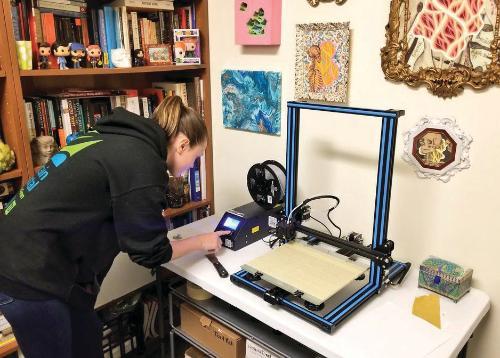
“What’s good about this technology is that now we have the files, so it’s easy for Walter to just call me and say, “Hey, can you print another horse foot?’ And they’ll have it the next day,” said Clary.
“Printing the Past: S.C. in 3D” will be on display through the end of year and has potential to become a traveling exhibit. Eventually, Hill plans to incorporate the pieces as permanent installations throughout the museum so that everyone, regardless of sensory abilities, will be able to connect with the historic treasures and resources of Horry County.







